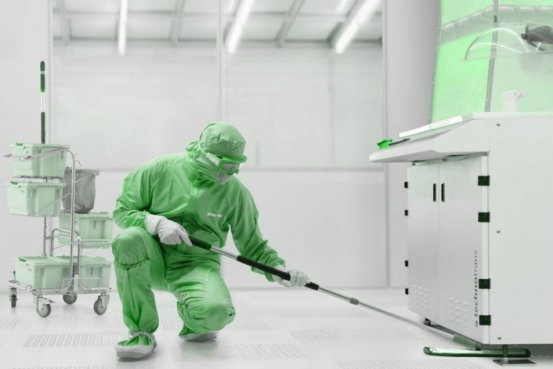In industries where a microscopic particle can halt production, cleanroom services are essential. From pharmaceutical laboratories to semiconductor fabrication and aerospace manufacturing, these highly controlled environments maintain specific conditions to protect quality and precision. Using advanced filtration systems and strict operational procedures, cleanrooms minimize contamination risks and uphold the rigorous standards modern industries demand.

What Cleanroom Services Entail
Cleanroom services cover the professional cleaning, maintenance, and monitoring of environments that require precise air quality and contamination control. They are vital in sectors where even invisible particles can compromise performance or safety.
Technicians follow global standards such as ISO classifications, employing specialized cleaning materials and equipment to ensure both surfaces and air remain free of contaminants. Alongside cleaning, consistent airflow management and advanced filtration systems form the foundation of a stable cleanroom environment.
The Importance of Strict Standards
Cleanroom regulations are designed to eliminate contamination risks that could jeopardize safety or product quality. In electronics, a single speck of dust can ruin a microchip, while in biotech and pharmaceuticals, impurities can threaten health outcomes.
Adhering to these standards protects product integrity, prevents costly production failures, and strengthens compliance with health and safety authorities. Essentially, these guidelines provide the trust and assurance that high-stakes industries rely on.
Categories of Cleanrooms
Under ISO standards, cleanrooms are classified by the number of allowable particles per cubic meter. The scale ranges from ISO Class 1—the most stringent—to ISO Class 9, which allows for higher tolerances.
Semiconductor facilities – demand near-zero particulate contamination.
Pharmaceutical manufacturing – prioritizes sterility for drug safety and efficacy.
Aerospace and defense operations – ensure precision assembly free from airborne interference.
Selecting the appropriate cleanroom class ensures that operational needs and costs are balanced effectively.
Core Components of Cleanroom Functionality
A cleanroom’s reliability depends on the coordination of multiple systems working together:
Filtration: HEPA and ULPA filters eliminate airborne contaminants.
Airflow Management: Controls temperature, pressure, and humidity to prevent spread of impurities.
Surface Maintenance: Specialized tools and solvents remove residue buildup.
Continuous Monitoring: Real-time sensors and particle counters maintain compliance.
Consistent inspections, calibration, and record-keeping guarantee performance accuracy and reliability.
Best Practices in Cleanroom Cleaning
Cleanroom cleaning follows an exact process. Dry wiping is used first to remove loose particles, followed by wet cleaning with low-residue agents. Some sectors employ ionized or deionized water rinses to achieve sterilization.
Disposable mops, wipes, and garments are used to eliminate cross-contamination. Depending on the facility, both manual cleaning and automated systems are employed, supported by detailed cleaning checklists to ensure no surface is overlooked.
Staff Training and Safety Protocols
Personnel play a critical role in maintaining cleanroom performance. Workers receive detailed training in gowning, entry and exit procedures, and contamination prevention. Proper handling of cleaning chemicals and use of protective equipment ensure both worker safety and environmental integrity.
Regular recertification and refresher training keep staff aligned with evolving standards and technological improvements.
Industries That Rely on Cleanroom Services
Cleanroom operations are indispensable in multiple sectors, including:
Semiconductor manufacturing – where dust can cause chip defects.
Pharmaceuticals and medical devices – where contamination risks affect patient health.
Aerospace and defense – where precision and purity are mission-critical.
Scientific research – where stable conditions ensure valid experimental outcomes.
Technological Advancements in Cleanroom Management
Modern innovations are transforming cleanroom efficiency and control. Notable developments include:
ULPA filters: Offering greater filtration than HEPA systems.
IoT-based monitoring: Real-time data tracking and automated alerts.
Robotics: Reducing human intervention and minimizing contamination risk.
Antimicrobial surfaces: Extending cleaning intervals and lowering contamination potential.
Compliance and Regulatory Requirements
Meeting ISO and GMP regulations is fundamental to operational credibility. Frequent audits, validation reports, and detailed documentation confirm that facilities meet required performance standards.
Accurate record-keeping of maintenance schedules, air monitoring results, and staff training logs supports both inspections and regulatory approvals.
The Future of Cleanroom Services
As industries evolve, cleanroom management is moving toward automation and sustainability. AI-driven predictive maintenance, energy-efficient ventilation, eco-friendly cleaning agents, and autonomous cleaning robots will define the next generation of cleanrooms.
Blending human expertise with smart systems will ensure these controlled spaces maintain exceptional cleanliness while reducing costs and environmental impact.
Conclusion
Cleanroom services form the foundation of industries where precision and safety are non-negotiable. Through strict standards, technological advancement, and professional oversight, they guarantee reliable performance and contamination-free production. As innovation continues, cleanrooms will become even more efficient, sustainable, and essential to the success of advanced manufacturing and research worldwide.
